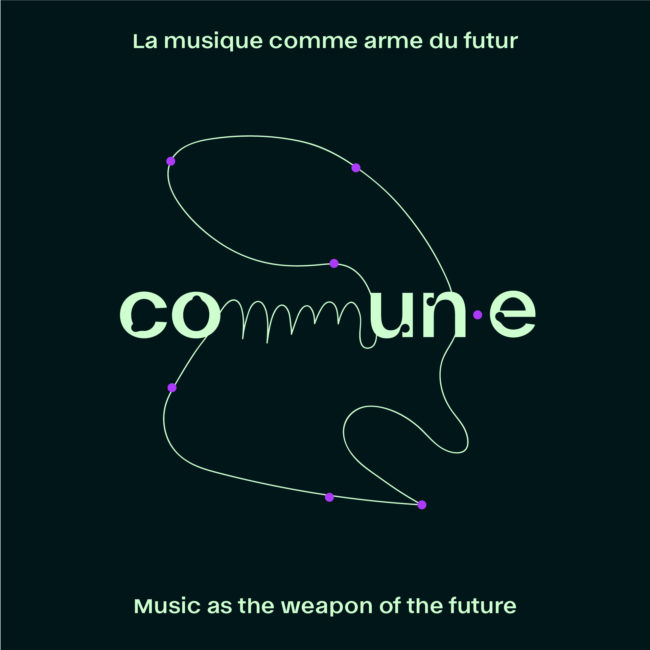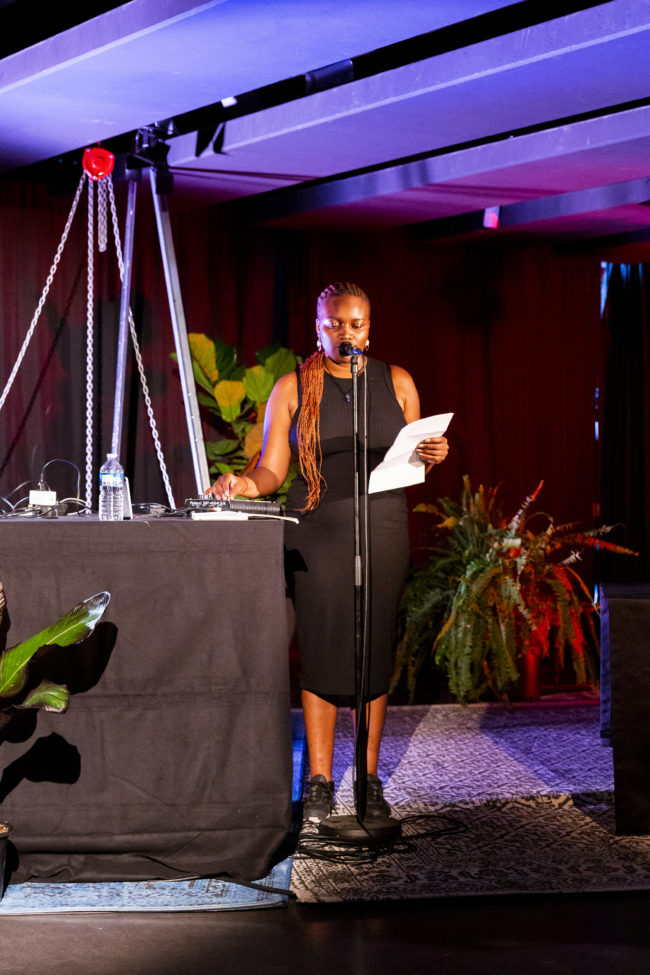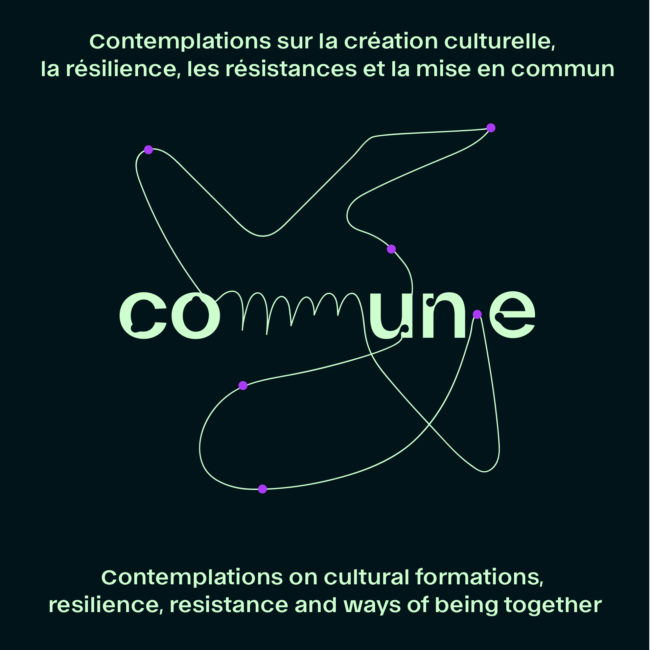Commun.e - Fly Machine Session
For this second session, Ziphozenkosi Dayile invites Fly Machine Session and Vusi Hlatywayo aka Flames Shilowa to create an new music playlist : "Mmino wa Molopo" (Music of the spirits)
Commun.e
Invoking Collectivism through Selection.
Thobile Ndenze : The brief that you had to respond to [which was to imagine what collectivism looks like from the perspective of a music selector] is a deceptively simple concept but it is in actual fact quite difficult especially if the intention is for the theme of collectivism to be immediately evident.
What were the initial thoughts that entered your mind and how did these initial ideas eventually take the shape of a musical map that you used to develop this selection?
Vusi Hlatywayo : My first thought was South African cultural and indigenous music from different indigenous groups. I have been enjoying the musical synergy of the groups, how they sing as a collective with one leading and supported by a quartet, trio or choral massive which is usually group of women. It has always been a big part of my research to dig up for more music like this. You can never go wrong with the traditional sounds of South Africa mainly from the late 60s, 70s and 80s era.
TN : You open the selection with Phillip Tabane and his Malombo Jazzmen. The kind of jazz folk music of Tabane has a very sacred quality to it. I would say this is music played at the tempo of a diviner’s trance. This sets a great tone for the rest of the 2 hours.
What do you believe makes this particular music (Malombo) so generous and giving?
VH : It was actually inspired by the Passing of Mabi Thobejane who was one of the best percussionists and drummers in South Africa. This specific song is from one of the earlier albums with him and Phillip Tabane as they took flight as Malombo Jazzmen “The Indeginous Afro-Jazz Sounds of Malombo”. I titled it “Mmino wa Molopo” (Music of the Spirits) and to add to my theme I compiled music which also had plenty of percussion. It felt right to open and close up with music of malombo.
TN : Journeying through the selection one picks up a ‘field recording’ quality to it. It is as if you emerged from a long trip where you harvested folk songs. There is a very ‘road travelled’ sensation in the cumulative way that the selection hits the listener.
How do you respond to this assessment?
VH : I would say that many factors contributed to that, since these are recordings captured on vinyl. The different qualities of the recordings gave it a variety of textures. Some were studio recordings, some were recorded in the field, and the different acoustics on tracks give it that “road travelled” sensation I think.
TN : Another sensation that the selection evokes is that of concentric circles. In the first quarter of the playlist and in other parts of the playlist, there is a sensation of contraction and expansion that comes across quite strongly. I felt that this eerily spoke to the image that accompanied the collectivism theme that you were responding to.
Was this a beautiful accident or was it deliberate on your part to create this kind of pulse?
Moments of intensity and moments of release.
VH : To be honest it only made sense after I listened to it because it took me a while to form a narrative. I got lost in the process and of course I had a few takes but my approach to it was for the next track to be responsive to the previous track. It felt like it was edited visuals but was also about following the oral tradition in the music, the storytelling and anecdotes, which are captured in the audio.
TN : Something magical happens when these folkloric song forms are executed with the accompaniment of modern instrumentation. I think of what happened to Southern Delta Blues when they got electrified in Chicago or how West African styles of music integrated jazz and other diasporic influences that were emanating from the West. This superimposition produces something with unexpected results.
Do these songs become more effective collective art when they meet the different textures that are brought in by new instrumentations?
VH : Yes, I think they do. Even though most of the instruments are improvised, like the percussion instrument consisting of a hollow tin cylinder with a skin stretched tightly over one or both ends, which is sometimes used by Bapedi and especially the traditional Harp used by Johannes Mohlala and Alpheus.
Phillip Tabane in the opening is a perfect example of this when he improvises in the middle of the track as if he is invoking spirits.
TN : The call and response song form runs very prominently throughout the music you selected. Do you care to talk about how you feel this song form transmits the communal or the collective spirit?
VH : I think most of these songs are invocations and chants of different ethnic groups and I decided to kind of form a dialogue between them. The call and response theme is also evident in the singing between the lead and the backing vocals. Most of these groups are people who grew up in the same community and some bands were family members who worked as a collective.
TN : Cultural life, in the communal way that we have always conceived it, is facing increasing levels of assault (bureaucratic, political and otherwise) that are having the effect of breaking down the impulse to work collectively or to randomly commune.
In your observation, do you think we have the collective resources through our various cultural practices to withstand this assault on the communal?
What is the changed future of accessing ecstatic and new music in a communal setting?
VH : I believe in the importance of music in the role it plays in enhancing human social development and in the upliftment of communities. I think we live in a strange time where people’s engagement with music is less collective and more individual. Celebrations such as festivals like the Cape Town Minstrels is one the first things, which come to mind here as collective events that are under threat.
Modern music is about the interaction between individuals. We learn from each other and we are participating in the making of the music as a collective. It also improves communication and social integration, as there is an exchange of stories and sharpening of skills. We are living in strange times now where curfews are issued and social gatherings are prohibited. We are living in a climate where we are forced to learn to only work individually.
TN : In some of the ‘call and response’ selections, there is also a pedagogical feeling. The feeling that those participating are gaining lessons. The song form as a vehicle to impart wisdom to the masses.
This was a very skillful way of addressing the question of how through music it is possible to address the collective need.
I would like your response to this observation.
VH : I was intrigued by the folktales, fables, epic histories and narrations, proverbs or sayings in the songs. It felt like the ancient tradition of telling stories around the fire. Listening to the music felt like the performers are relieving stress and anxiety and using the song as a form of therapy for the community and the more they participate is the more it augments as a healing force. The music is universal and caters to a diverse group of people and it enhances closeness and connections.
TN : Referring back to the themes that you were requested to respond to – I think the music responded superbly. Earlier I spoke of concentric circles expanding and contracting; the conversational nature with defined roles; the impartation of wisdom, lead with accompanying voices. Considering all these factors and then looking at the image, the resonance is unmistakable.
(Moreover, did you notice that it was a gathering of only women?)
VH : Actually that was the first thing I noticed and immediately I knew what my approach towards interpreting the theme would be. It was an interesting process for me because one my first instincts was to look for dialogues in the music. This is why you predominately hear a collective of women singing in unison and in harmony. My first glimpse of the image already played a soundtrack in my head and it felt like I could hear everything that was taking place in that captured moment.
TN : As a general observation, it is hard to think of another musical milieu (outside of these Southern African folkloric and indigenous blues jams) that you could have picked or used as a base when responding to the concept.
Unless I am wrong...?
Are there other musical traditions that could have delivered your intentions?
VH : For now, these are the traditions I am mostly familiar with and that I am engaging with.
I would branch out to the traditional music of Northern Nigeria, which is group based and filled with drums and percussion and the likes of music from Senegal. There was an interesting video I watched of the Maasai tribe singing and dancing (https://www.youtube.com/watch?v=5Y_b_nmgECc) and it was a collective of women in colorful and beautiful traditional wear. I would love to discover more of their music on that level; it was going to be perfect the theme of my mix.
Interview by Thobile Ndenze (Breaking Bread)
English-to-French translation: Zahra Tavassoli Zea
Tracklist
1. Malombo Jazzmen - Katloganoa
2. Alpheus Moila - Mmamalekere
3. Johannes Mohlala and His Harp - O tlaba wa tshaba
4. Ingaliwe Inbombi - Pactor Sibiya
5. Elias Maluleke and Guyu Sisters - Swibombi
6. S.Chauke - Vuya Salemo
7. Makhubela and Nkhlwani Girls - Dhlayani Anina Nwhina
8. Mhlamba Ndlopfu Queens - Ntsatsi Vukwele
9. Phuzushukela - George Koch
10. John Moriri and the Manzini Girls - Uyindonda Mazobuko
11. Mhlambe Mthombeni - Emdutshana
12. Two Gunmen and Ndebele Queens - Emma
13. Khatisa Chabalala and the Queens - Salanini Vaka Gaza
14. Mahlasela - Yowe Yowe
15. Calabash - Idlozi
16. Ifindo - Ifindo
17. Gideon Nxumalo - Chopi Chopsticks
18. Gibson Kente - Elaqaba
19. Ohinina - Ohonina
20. Rhangani - Ellee
21. Samson Mthombeni - Khoma
22. M.D Shirinda and Gazankulu Sisters - Hambi Mhake
23. Amigos - Kamarada
24. Abel Mokhari - Nidyiwa Adjoni
25. Elias Baloyi - Swiloyini
26. Mashalashala Girls - Wangena
27. Sweet Sixteens - Ngiyamkhalela
28. Izintombi ZeGolide - Sgembengu
29. Ngane Ziyamfisa - Izembe
30. Dark City Sisters - Molaetsa Ke o
31. U Nyabela - Siphenge
32. Armando Bila Chijumanje - Xihukwana Xa Mina
33. Matanato Brothers and Gaza Queens - Dayimani
34. Malombo Jazz Maker - Malombo Jazz Walk










































